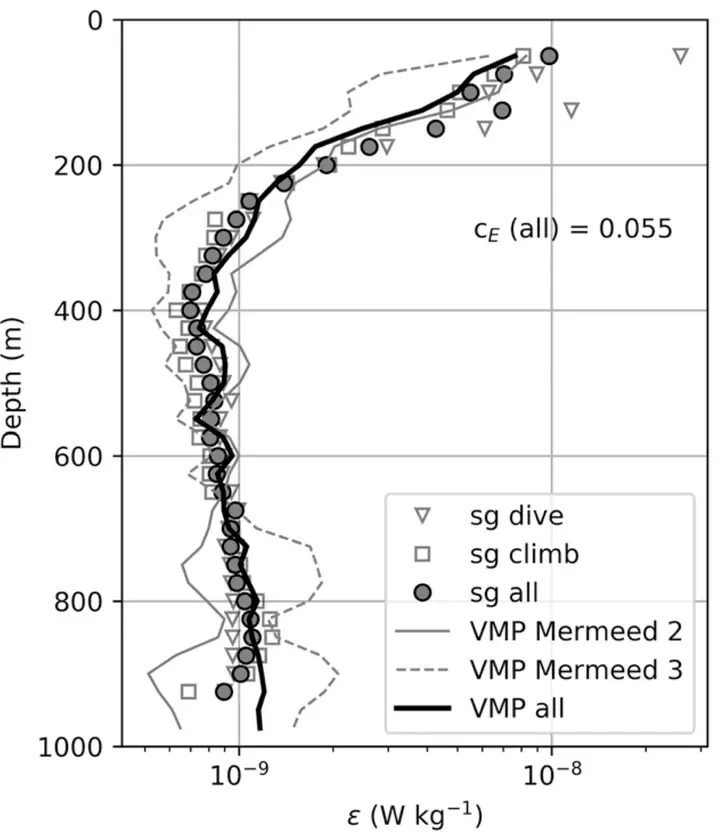Breaking of internal waves and turbulent dissipation in an anticyclonic mode water eddy
 Comparison of log-averaged « profiles obtained with the VMP microstructure profiler during the MerMEED cruises (lines: gray solid for MerMEED II (November), gray dashed for MerMEED III (March), black for both cruises) and the glider estimates (markers: triangles for dives, squares for climbs, and solid circles for both). The value of the cE constant shown was obtained by least squares minimization of the difference between the log-averaged profiles.
Comparison of log-averaged « profiles obtained with the VMP microstructure profiler during the MerMEED cruises (lines: gray solid for MerMEED II (November), gray dashed for MerMEED III (March), black for both cruises) and the glider estimates (markers: triangles for dives, squares for climbs, and solid circles for both). The value of the cE constant shown was obtained by least squares minimization of the difference between the log-averaged profiles.Abstract
A 4-month glider mission was analyzed to assess turbulent dissipation in an anticyclonic eddy at the western boundary of the subtropical North Atlantic. The eddy (radius ≈ 60 km) had a core of low potential vorticity between 100 and 450 m, with maximum radial velocities of 0.5 m s−1 and Rossby number ≈ −0.1. Turbulent dissipation was inferred from vertical water velocities derived from the glider flight model. Dissipation was suppressed in the eddy core (ε ≈ 5 × 10−10 W kg−1) and enhanced below it (>10−9 W kg−1). Elevated dissipation was coincident with quasiperiodic structures in the vertical velocity and pressure perturbations, suggesting internal waves as the drivers of dissipation. A heuristic ray-tracing approximation was used to investigate the wave–eddy interactions leading to turbulent dissipation. Ray-tracing simulations were consistent with two types of wave–eddy interactions that may induce dissipation: the trapping of near-inertial wave energy by the eddy’s relative vorticity, or the entry of an internal tide (generated at the nearby continental slope) to a critical layer in the eddy shear. The latter scenario suggests that the intense mesoscale field characterizing the western boundaries of ocean basins might act as a “leaky wall” controlling the propagation of internal tides into the basin’s interior.